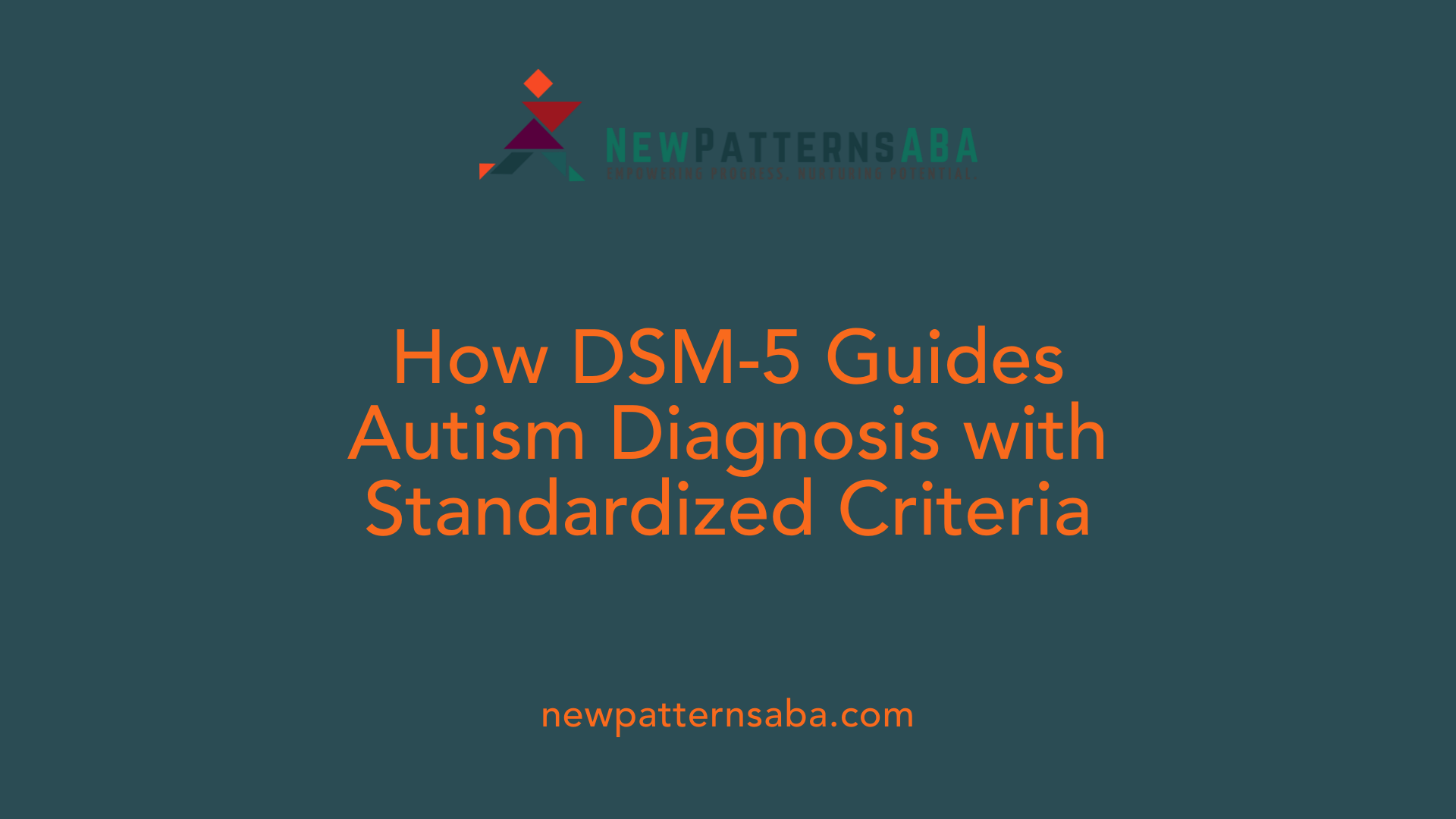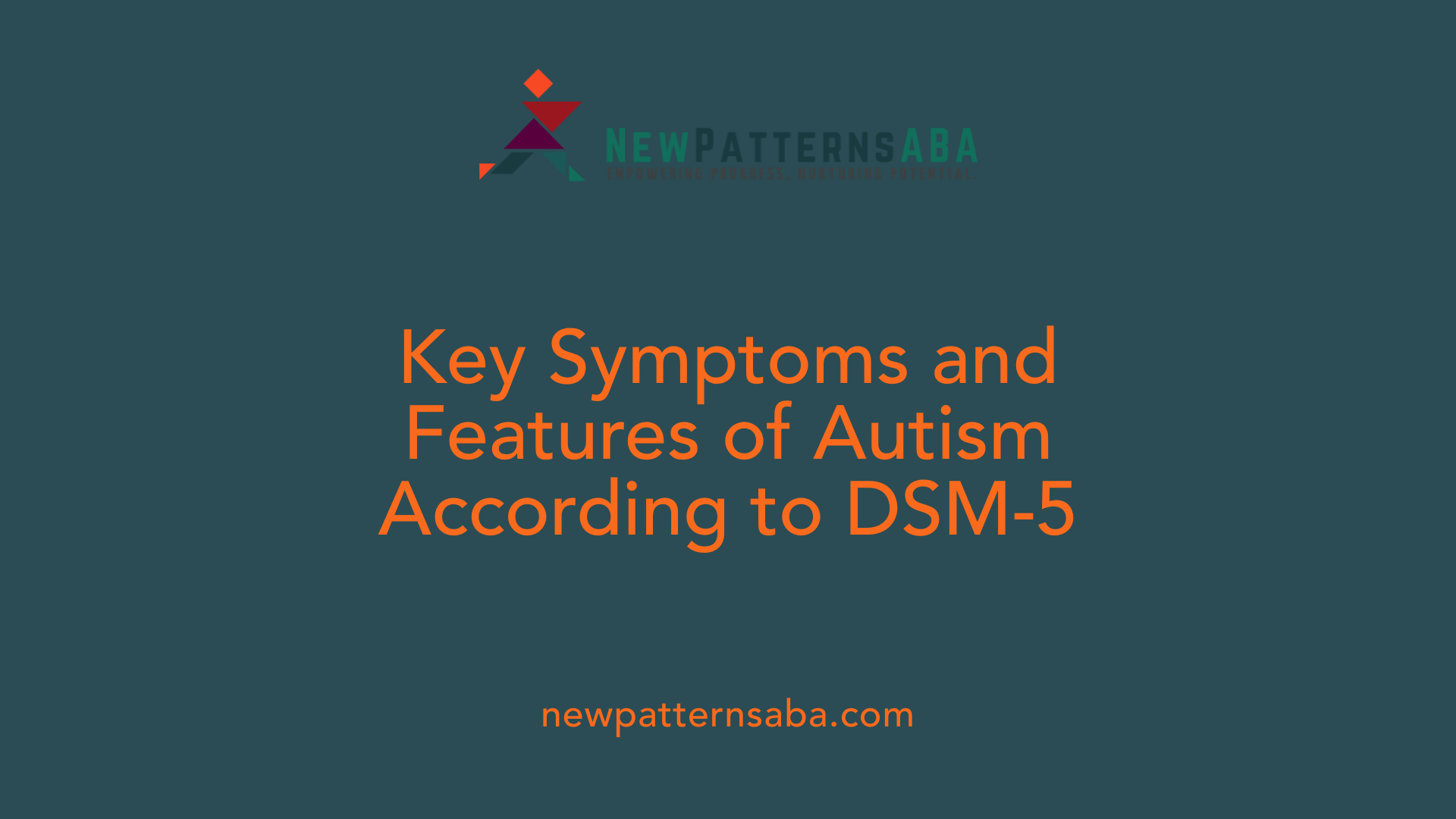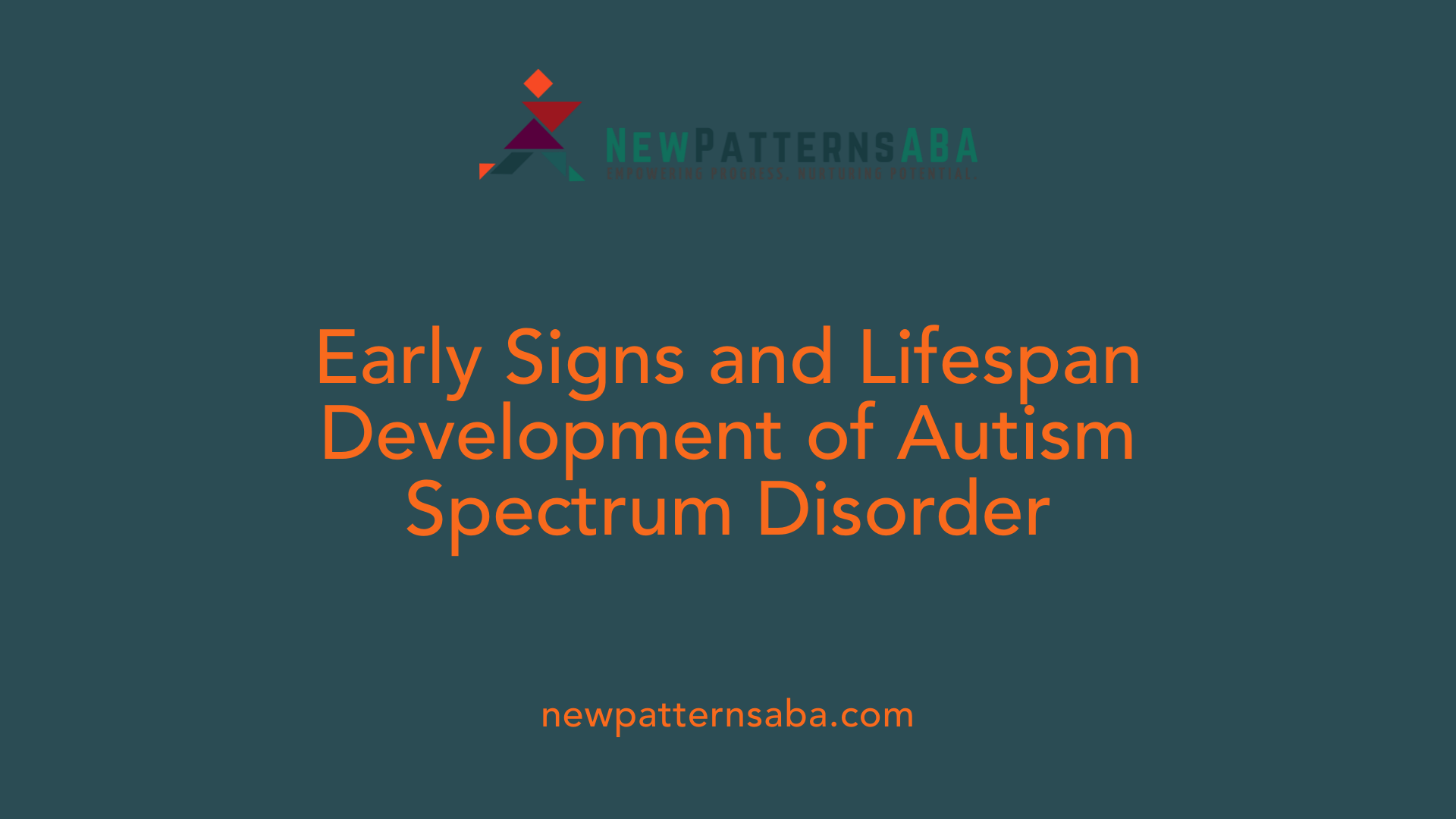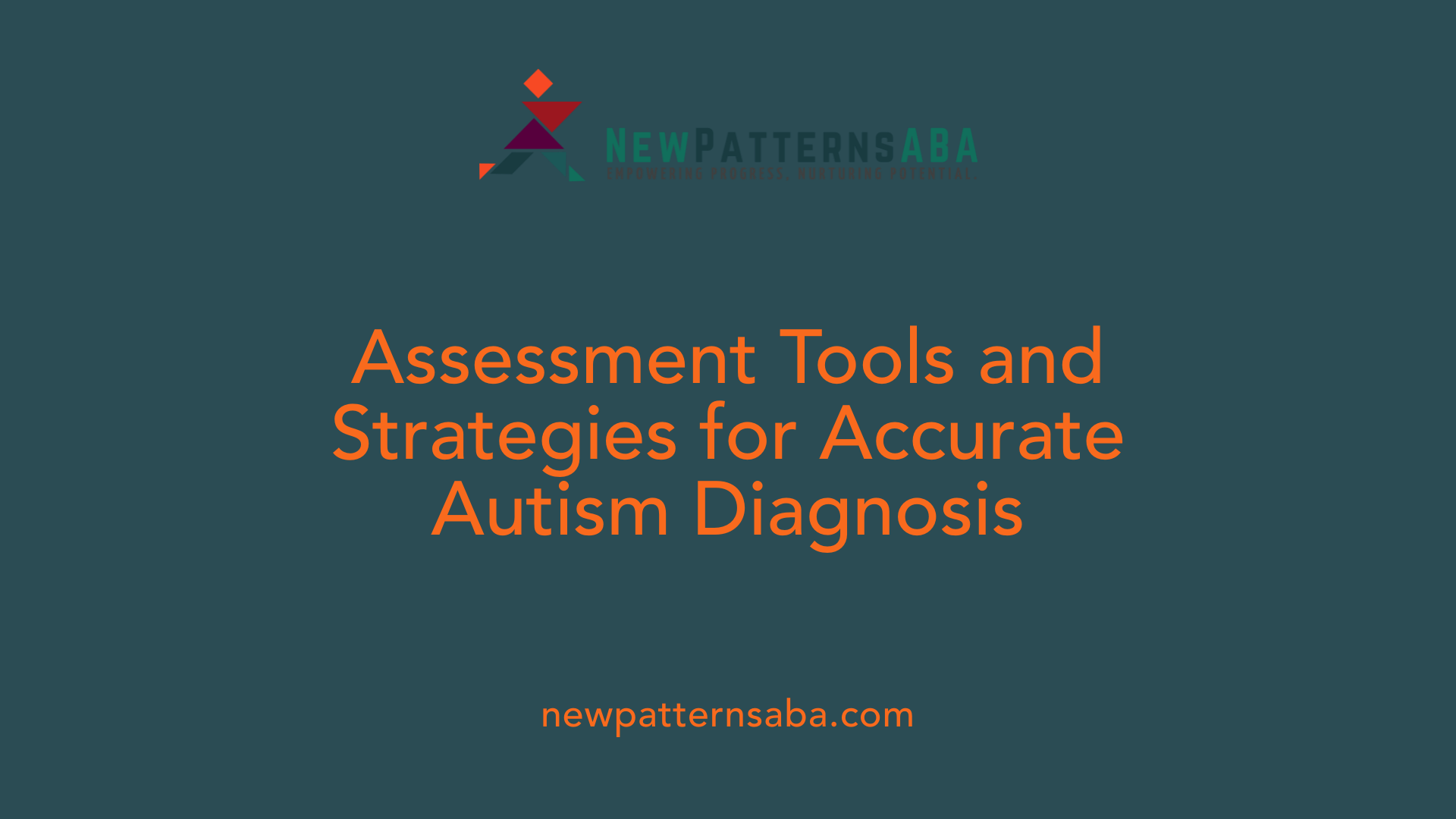Introduction to Autism Spectrum Disorder Diagnostic Standards
Autism Spectrum Disorder (ASD) is a complex neurodevelopmental condition characterized by challenges in social communication, interaction, and the presence of restricted, repetitive behaviors. The Diagnostic and Statistical Manual of Mental Disorders, Fifth Edition (DSM-5), provides comprehensive, standardized criteria for clinicians to accurately diagnose ASD, facilitating consistent assessment and intervention across diverse clinical settings.
The Foundation of DSM-5 Diagnostic Criteria for Autism

What is the DSM-5 diagnostic tool for autism?
The DSM-5 diagnostic tool for autism is based on a standardized set of guidelines outlined in the Diagnostic and Statistical Manual of Mental Disorders, Fifth Edition (DSM-5). These criteria focus on identifying persistent difficulties in social communication and social interaction across various settings, along with restricted, repetitive patterns of behavior, interests, or activities.
To diagnose Autism Spectrum Disorder (ASD), clinicians evaluate whether an individual exhibits these symptoms and the severity of the manifestations. The assessment process involves a thorough review of developmental history, behavioral observations, and input from caregivers or family members. This comprehensive approach ensures an accurate diagnosis, which is crucial for planning appropriate interventions. Unlike screening tools, which are preliminary, the DSM-5 provides the official guidelines needed for diagnosis.
Overall, the DSM-5's diagnostic framework helps healthcare professionals systematically identify ASD based on observable behaviors and developmental history, enabling consistent and reliable diagnoses.
Core Symptoms and Manifestations of ASD in DSM-5

What are the DSM-5 diagnostic criteria for autism spectrum disorder?
The DSM-5 criteria for Autism Spectrum Disorder (ASD) include persistent deficits in social communication and social interaction across multiple contexts. These deficits manifest as difficulties in social-emotional reciprocity, nonverbal behaviors used for social interaction, and challenges in developing, maintaining, and understanding relationships. Additionally, individuals must display restricted, repetitive patterns of behavior, interests, or activities, such as stereotyped movements, insistence on routines, or highly focused interests.
These symptoms typically appear during early developmental periods. They must also result in significant impairment in social, occupational, or other important areas. Importantly, the symptoms are not better explained by other neurodevelopmental or mental health disorders. Diagnosis involves a comprehensive evaluation by trained professionals using clinical observations, developmental history, and standardized tools like the ADOS or ADI-R.
Developmental and Lifespan Aspects of ASD in DSM-5

How is autism spectrum disorder diagnosed according to DSM-5 standards?
The DSM-5 specifies that diagnosing ASD involves identifying persistent deficits in social communication and interaction, as well as restricted and repetitive behaviors. Clinicians look for challenges with social reciprocity, nonverbal communication such as gestures and facial expressions, and forming or maintaining relationships. These symptoms are often observed through developmental history and behavioral observations.
Standardized tools like the Autism Diagnostic Observation Schedule™ (ADOS™-2) are employed to support the diagnosis, though there is no single medical test for ASD. A diagnosis typically considers whether these symptoms cause significant impairment and whether they are present since early childhood.
Importantly, symptoms should not be better explained by other conditions like intellectual disability. Assessments involve multiple sources of information, including parent reports and professional observations, to create a comprehensive picture.
Early detection is crucial, as symptoms often emerge around 18 months and are reliably diagnosed by age 2. Recognizing these signs early ensures timely access to intervention and support, which can promote better developmental outcomes.
Supporting Diagnostic and Intervention Strategies in DSM-5 Context

What confirms an autism diagnosis?
A confirmed autism diagnosis involves a thorough clinical evaluation conducted over multiple sessions by qualified professionals, including psychologists, speech and language therapists, and medical specialists. This assessment integrates various diagnostic tools such as the Autism Diagnostic Interview™ (ADI™-R) and the Autism Diagnostic Observation Schedule™ (ADOS™-2), alongside cognitive, speech, and language evaluations. Clinicians may also perform additional tests like neuropsychological assessments, hearing and vision screenings, and genetic testing to uncover underlying medical factors or genetic contributions.
The core focus is on identifying persistent difficulties in social interaction, communication challenges, and restricted or repetitive behaviors—hallmark features of autism spectrum disorder (ASD). Based on these comprehensive assessments, clinicians determine whether the individual meets the DSM-5 criteria for ASD and formulate personalized intervention strategies tailored to their needs.
What assessment tools does DSM-5 recommend for diagnosing ASD?
DSM-5 advocates for the use of standardized assessment instruments to improve diagnostic accuracy. The principal tools include the Autism Diagnostic Observation Schedule™ (ADOS™-2) and the Autism Diagnostic Interview™—Revised (ADI-R).
The ADOS-2 involves direct observation of the individual in structured and semi-structured interactions, assessing behaviors associated with ASD, such as social reciprocity, communication, and repetitive actions. The ADI-R employs detailed caregiver interviews to gather retrospective and current developmental history, providing critical insights into behavioral patterns.
When these tools are combined with clinical judgment, developmental history, and behavioral observations, they support a comprehensive diagnostic process. This approach helps determine the severity of autism and individual support needs, guiding targeted intervention planning.
How do clinicians approach differential diagnosis and consider comorbidities?
Differential diagnosis of ASD requires meticulous evaluation of developmental history, behavioral traits, and medical background to differentiate autism from other conditions like social communication disorder, ADHD, or intellectual disabilities.
Clinicians look for the presence of core autism features—such as deficits in social reciprocity, repetitive behaviors, and sensory sensitivities—and identify whether these are specifically attributed to ASD or result from other disorders. For instance, while social communication difficulties may occur in both ASD and social communication disorder, the presence of restrictive and repetitive behaviors typically confirms ASD.
Recognizing co-occurring conditions, such as anxiety disorders or ADHD, is essential because these can influence treatment strategies. The DSM-5 emphasizes that autism diagnoses should not be made if symptoms are better explained by another condition. An accurate diagnosis involves an integrative, multidimensional assessment that considers all aspects of the individual’s development and current functioning.
More about assessment methods for ASD, diagnostic tools, differential diagnosis, co-occurring conditions, and intervention planning
| Aspect | Tools/Methods | Purpose and Details | Additional Notes |
|---|---|---|---|
| Standardized assessment | ADOS-2, ADI-R | Observe behaviors and gather developmental history | Increase diagnostic accuracy |
| Observation and interview | Clinical observation, caregiver reports | Identify core autism symptoms | Complement standardized tools |
| Medical evaluations | Hearing, vision, genetic testing | Identify co-occurring medical issues | Essential for comprehensive understanding |
| Differential diagnosis | Developmental and behavioral assessments | Differentiate ASD from similar conditions | Ensures accurate diagnosis |
| Comorbid conditions | Medical and psychological assessments | Recognize additional challenges like anxiety or ADHD | Guides intervention and support planning |
Implications for support and intervention
Understanding assessment procedures and diagnosis confirmation is crucial because it directly influences intervention strategies. Early and accurate diagnosis allows for timely access to therapies such as behavioral interventions, speech and language therapy, occupational therapy, and educational support. Recognizing co-occurring conditions enables tailored support plans that address multiple needs. Additionally, employing standardized tools and multidisciplinary evaluation ensures that interventions are personalized, effective, and aligned with the individual's severity level as specified by DSM-5 support categories.
Final Thoughts on DSM-5 Autism Diagnostic Criteria
The DSM-5 provides a precise, evidence-based framework for diagnosing Autism Spectrum Disorder, emphasizing core symptoms related to social communication deficits and restricted, repetitive behaviors. Its diagnostic criteria incorporate developmental history, behavioral observation, and standardized assessment tools, facilitating reliable and early identification. Recognizing the spectrum nature of autism and its varied severity levels allows clinicians to tailor interventions and support services effectively. As research evolves, the DSM-5 continues to refine its criteria, ensuring that diagnosis remains aligned with the latest scientific and clinical insights. Accurate diagnosis is a crucial first step in guiding individuals and families toward appropriate therapies, educational plans, and supportive resources to optimize developmental outcomes.
References
- Autism diagnostic criteria: DSM-5
- Clinical Testing and Diagnosis for Autism Spectrum Disorder - CDC
- Diagnostic Criteria for Autism Spectrum Disorder in the DSM-5
- IACC Subcommittee Diagnostic Criteria - DSM-5 Planning Group
- Autism: For professionals - Canada.ca
- Decoding autism in the DSM-5
- Criteria and tools used in an autism assessment
- Autism Spectrum Disorders: Diagnosis and Treatment - NCBI
- What Is Autism Spectrum Disorder? - American Psychiatric Association
- The Formal Diagnostic Criteria for Autism





